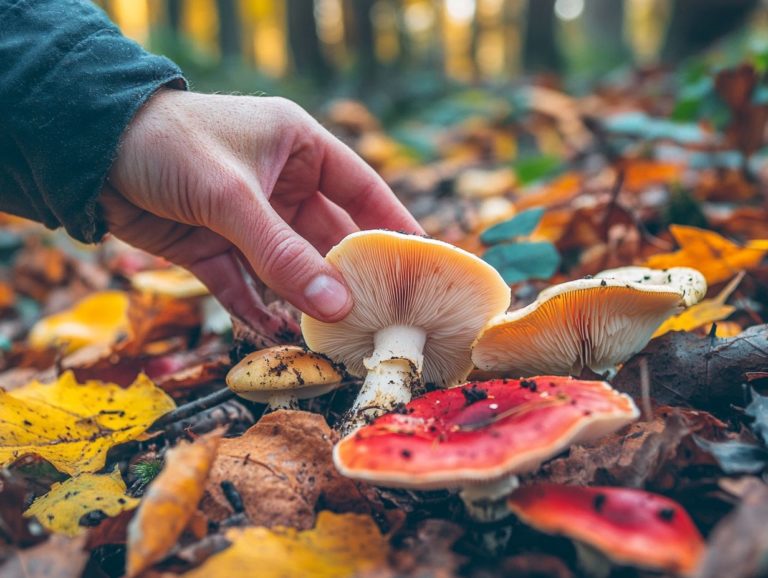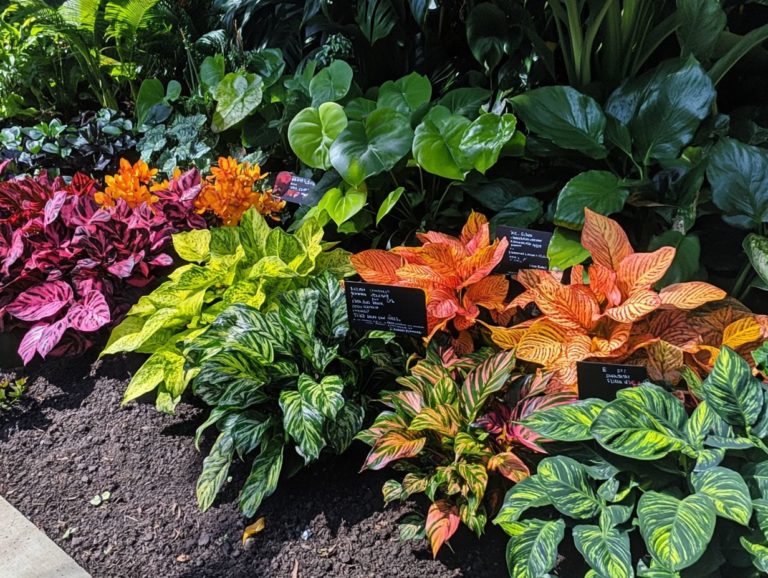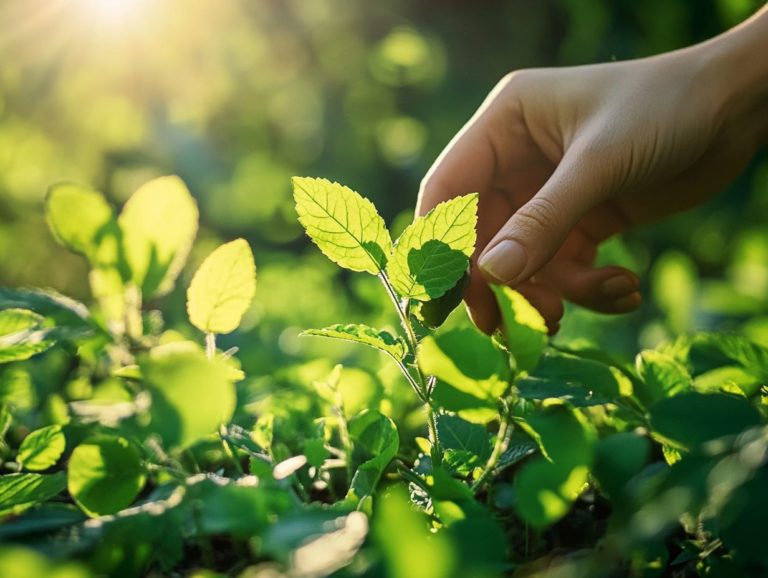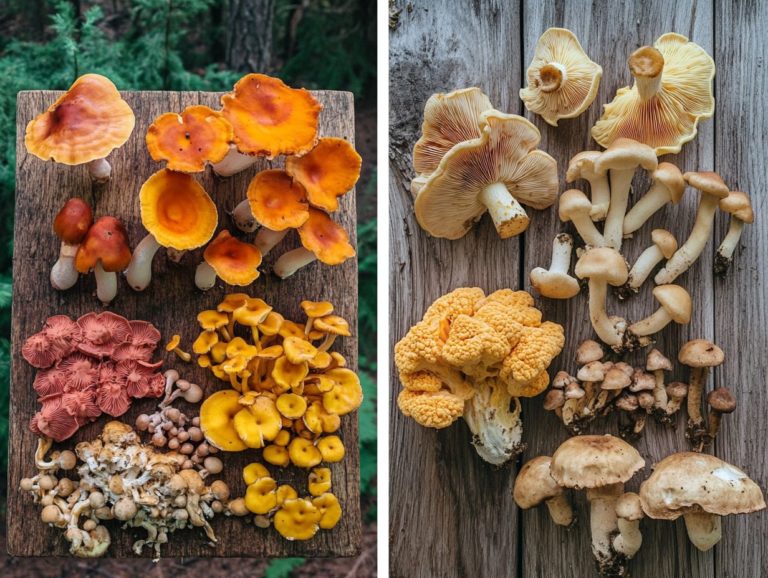How to Study Plant Characteristics for Identification
Plants surround you, yet it s easy to overlook their unique features and characteristics. Understanding these features is essential for plant identification and grasping the intricacies of ecosystems.
This guide will take you through the essential traits to observe, such as leaf shape, flower structure, and growth habits. You’ll also explore family patterns that reveal so much about the plants around you.
Prepare to enhance your botanical knowledge with insights from resources like the Golden Guide and Shanleyas Quest. You ll discover useful tools and techniques that will elevate your plant identification skills, empowering you to confidently recognize common species in your environment.
Contents
- Key Takeaways:
- Understanding Plant Characteristics
- The Importance of Studying Plant Characteristics
- Basic Plant Characteristics to Look For
- Tools and Techniques for Studying Plant Characteristics
- Practical Application: Identifying Common Plant Species
- Educational Resources for Plant Identification
- Frequently Asked Questions
- What are some key plant characteristics to look for when identifying a plant?
- How can studying plant characteristics help with plant identification?
- What is the best way to observe and study plant characteristics?
- Are there any online resources or tools that can assist with studying plant characteristics for identification?
- Why is it important to take note of the environment when studying plant characteristics?
- Can studying plant characteristics also help with identifying poisonous plants?
- Educational Resources for Plant Identification
- Frequently Asked Questions
- What are some key plant features to look for when identifying a plant?
- How can studying plant features help with plant identification?
- What is the best way to observe and study plant features?
- Are there any online resources or tools that can assist with studying plant features for identification?
- Why is it important to take note of the environment when studying plant features?
- Can studying plant features also help with identifying poisonous plants?
Key Takeaways:
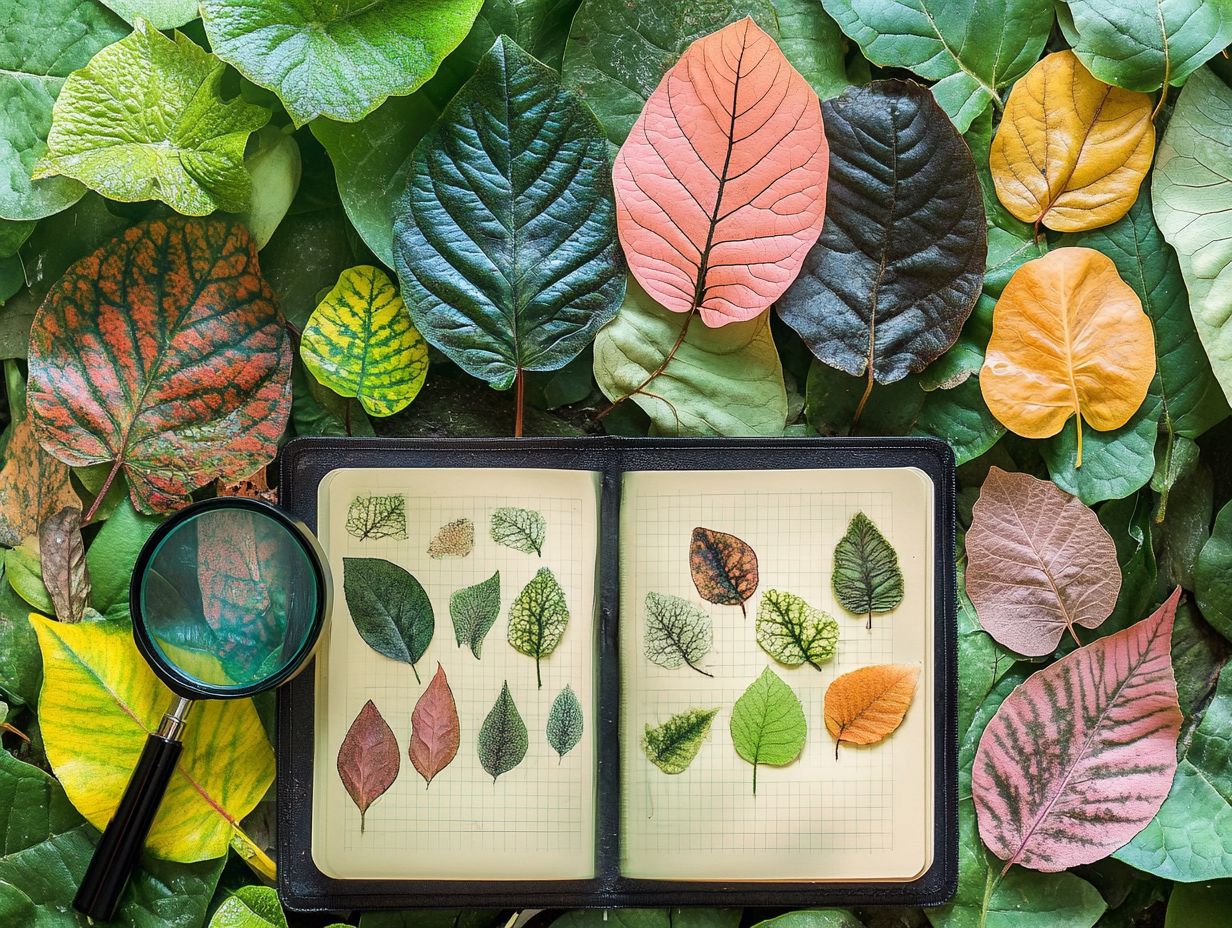
- Understanding plant characteristics is crucial for accurately identifying different plant species and engaging with nature lovers.
- Studying plant characteristics can provide numerous benefits, such as aiding in plant identification and enhancing your appreciation for the Mint family and the Parsley family.
- Leaf shape and arrangement, flower structure and color, and stem type and growth habit are important characteristics to look for when identifying plants, especially within the Rose family.
Understanding Plant Characteristics
Grasping plant characteristics is crucial for anyone exploring botany or the fascinating world of edible plants. By examining the unique traits of various plant families like the Mint, Parsley, Mustard, and Pea families you can cultivate a deeper appreciation for nature.
Influential works such as Thomas J. Elpel’s *Botany in a Day* and invaluable resources like wildflower guides and botanical keys will enhance your journey of discovery. Analyzing these characteristics helps you identify plants accurately and enriches your connection to the natural world.
The Importance of Studying Plant Characteristics
Studying plant characteristics opens up a wealth of benefits for plant identification. It enriches your understanding of botany and helps you distinguish between various plant families, as explored in the science behind plant identification.
This knowledge boosts conservation efforts and nurtures a deeper connection with the environment. It allows you to engage more fully with the beauty of the natural world around you.
Basic Plant Characteristics to Look For
When identifying plants, focus on several fundamental characteristics: leaf shape, flower structure, stem type, and growth habit. These traits are particularly important in the Grass family and lay the groundwork for effective plant identification.
By mastering the distinction between common names and scientific names, you can navigate the intricate realm of plant families effortlessly. Start your adventure today by observing plants in your yard or local park!
Leaf Shape and Arrangement
Leaf shape and arrangement are essential aspects of plant characteristics that greatly aid in your journey of plant identification. You’ll encounter a fascinating array of leaf shapes oval, lanceolate, or palmate and their arrangements on the stem. These can be alternate, opposite, or whorled. These details are exciting clues that can help both botanists and plant lovers.
These distinctive features not only enhance the visual allure of flora but also play a crucial role in adaptation to environmental factors. Take needle-like leaves, for example; those forms are often found on coniferous trees and represent adaptations seen across several plant families. On the flip side, broad, expansive leaves seen in tropical plants within the Lily family are designed to maximize photosynthesis in sun-drenched environments.
By quickly learning these variations in leaf shapes, you ll become a plant identification pro! Understanding variations in morphology such as pinnate and compound structures will equip you to identify plants across diverse ecosystems, from lush rainforests to arid deserts, using a dichotomous key (a tool that helps you identify plants based on their characteristics). This knowledge ultimately reveals the remarkable adaptations within the plant kingdom.
Flower Structure and Color
Flower structure and color are essential traits to consider when identifying plants, as they significantly influence how pollinators are attracted and which plant families they belong to. The variety of flower shapes, sizes, and colors can guide you in recognizing edible plants while deepening your understanding of their ecological roles.
For example, the specific arrangement of petals and reproductive structures can reveal a plant’s family. Take the Asteraceae family, with its iconic daisy-like blooms, or the Fabaceae family, distinguished by its unique legumes both provide clear visual indicators.
The vibrant colors of flowers often attract specific pollinators, a vital aspect of plant reproduction, highlighting the importance of recognizing edible species. By grasping these floral characteristics, you not only enhance your identification skills but also uncover the intricate relationships between plants and their environments.
Stem Type and Growth Habit
The type of stem and growth habit are essential characteristics that offer valuable insights into a plant’s identification and ecological niche, particularly when exploring botanical terms. You ll find that different plants may feature herbaceous or woody stems. Their growth habits can vary from creeping to upright, including those seen in common grass species. These variations are key when using identification keys for precise classification.
These traits not only aid in pinpointing specific species but also help categorize plants into broader families. For example, the succulent stems of cacti serve as significant indicators of their adaptation to arid environments, while the climbing growth habit of vines highlights their reliance on support to reach sunlight. Consider plants like grasses, which possess flexible stems that enable them to bend with the wind, showcasing an array of survival strategies.
By recognizing such variations, you can deepen your understanding of the intricate relationships among plant species and their roles within ecosystems.
Tools and Techniques for Studying Plant Characteristics
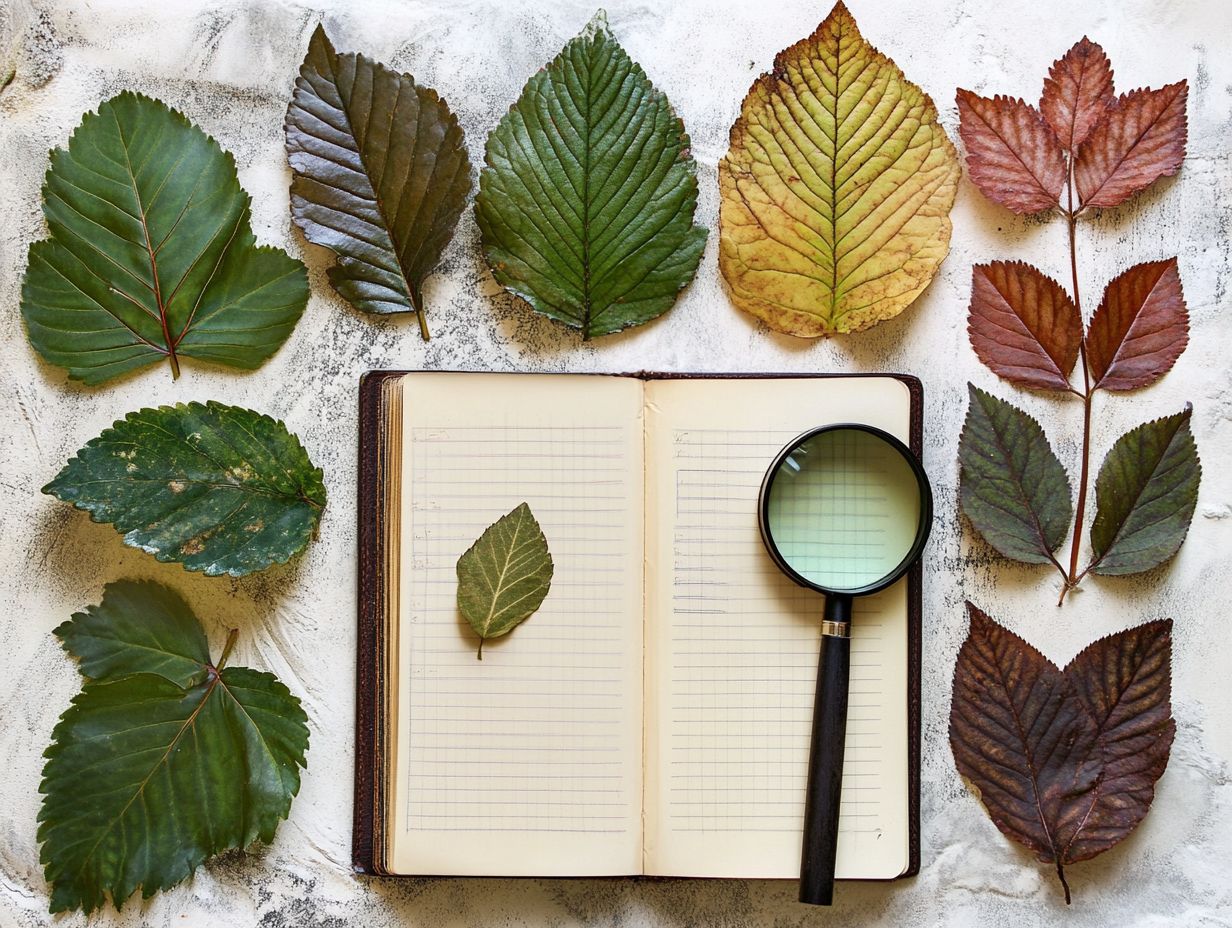
By using the proper tools and techniques for studying plant characteristics, you can significantly enhance the accuracy and efficiency of your plant identification endeavors, especially with a botanical loupe.
Essential resources at your disposal include botanical keys, field guides such as the Wildflower Guide, alongside invaluable tools like a botanical loupe. These instruments enable you to scrutinize the intricate details of plants, from the delicate structures of leaves to the fascinating anatomy of flowers, elevating your appreciation of the natural world.
Using a Field Guide
A field guide is an invaluable resource for anyone passionate about plant identification. It offers essential botanical terms, common names, and detailed descriptions of various species. By utilizing a field guide, you can elevate your understanding of plant characteristics and sharpen your identification skills.
These guides often feature vivid illustrations and photographs, simplifying the process of recognizing the subtle differences between similar species. They are essential for children s books on botany. But they offer more than just names and descriptions; they provide insights into the habitats and growth conditions favored by various plants. This context is especially beneficial for those who immerse themselves in nature, enabling you to recognize and appreciate the rich biodiversity surrounding you.
Whether you’re a beginner or a seasoned botanist, these resources bridge the gap between casual observation and scientific understanding. They pave the way for a deeper engagement with the enchanting world of flora, supported by programs like UNCG Sustainability.
Collecting and Examining Plant Samples
Collecting plant samples lets you explore their unique features. This practical method enhances your ability to identify them effectively using a botanical key, a tool that helps classify plants based on their characteristics. By observing the specimens closely, you can pinpoint specific traits and draw insightful conclusions about their botanical family.
This process requires you to carefully select healthy specimens, paying attention to their morphology. Document features such as leaf shape, flower color, and growth patterns in relation to plant identification terminology. Such meticulous examination not only aids in distinguishing between similar species but also enriches your knowledge about their ecological roles and adaptations.
As you correlate these observations with a botanical key, a clearer picture emerges, facilitating accurate classifications and deepening your appreciation for biodiversity. Ultimately, this method bridges the gap between theoretical knowledge and practical application, paving the way for comprehensive studies in plant science and enriching your understanding of plant families.
Practical Application: Identifying Common Plant Species
Identifying common plant species offers a tangible way to harness your understanding of plant characteristics. This skill is accessible whether you’re just starting out or you re a seasoned botanist interested in exploring nature-lovers resources.
By engaging with dedicated online courses, you can master systematic methods to recognize plant families and their distinctive traits, including the benefits of using identification keys.
Step-by-Step Guide to Using Plant Characteristics for Identification
This guide provides a clear path to boost your confidence in recognizing various species. Follow specific steps using a botanical key to analyze traits such as leaf shape, flower color, and stem type.
- Begin by observing the plant in its natural habitat, paying close attention to its size and overall structure.
- Next, scrutinize the leaves; their arrangement, margin, and texture provide valuable clues. For instance, a palmately lobed leaf typically suggests a different plant family than one with a serrated edge.
- Taking note of the flower characteristics is also essential; noting the number of petals or their arrangement can significantly narrow down your options.
- Furthermore, take note of the fruit type whether it s a berry, capsule, or another form can offer further insights into the species identity.
Through careful observation and meticulous note-taking, you can enhance your plant identification skills and enjoy the process even more. Using identification keys and morphological terms can aid in this endeavor.
Ready to explore the fascinating world of plants? Let s get started on your journey!
Educational Resources for Plant Identification
Educational resources are essential for improving your plant identification skills. They cater to a wide audience, from curious children to engaged adults.
Books like *Botany in a Day* by Thomas J. Elpel provide valuable information. Various wildflower guides are also accessible and insightful.
Online courses offer structured learning experiences. They allow nature enthusiasts like you to cultivate a deeper appreciation for the unique characteristics of plants and their significance in the ecosystem. Resources like Clemson Extension and UNCG Sustainability can be particularly helpful.
Frequently Asked Questions
What are some key plant characteristics to look for when identifying a plant?
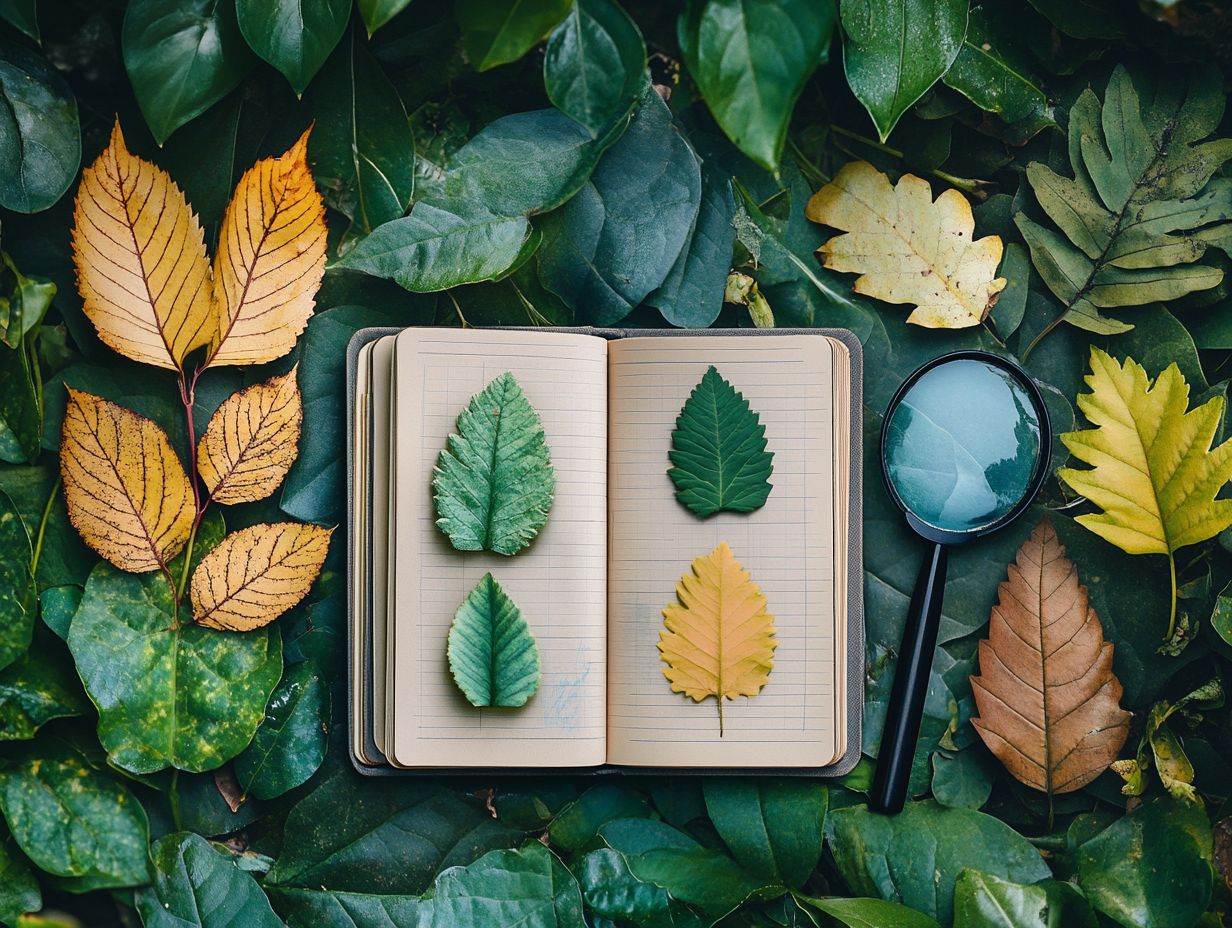
Some key plant characteristics to look for include leaf shape, flower color, stem texture, and overall plant size and shape. Familiarizing yourself with common names and scientific names can also aid in identification, and you can learn more by exploring how to use local flora for identification.
How can studying plant characteristics help with plant identification?
Studying plant characteristics helps with identification by providing specific details that differentiate one plant from another. These details can also narrow down the list of potential plant species, especially when using a dichotomous key, a tool that helps you identify plants based on a series of choices. For more insights, check out understanding the basics of plant identification.
What is the best way to observe and study plant characteristics?
The best way to observe and study plant characteristics is by using a botanical loupe or hand lens. This allows you to see smaller details like leaf venation or flower parts clearly.
Are there any online resources or tools that can assist with studying plant characteristics for identification?
Yes, many online resources and tools can assist with studying plant characteristics. These include apps, websites, and online databases with photos and descriptions of different plant species. Games like Shanleyas Quest add a fun aspect to learning.
Why is it important to take note of the environment when studying plant characteristics?
The environment greatly affects a plant’s characteristics, such as its size, color, and texture. Knowing the environment in which a plant is found can provide valuable information for identification especially when considering edible plants or those in the Mint family and Parsley family.
Can studying plant characteristics also help with identifying poisonous plants?
Yes, studying plant characteristics can help identify poisonous plants. Certain characteristics, like specific leaf shapes or colors, can indicate toxicity. Understanding family patterns can further aid in this identification process.
A systematic approach to using plant characteristics for identification boosts both accuracy and confidence. By following specific protocols and learning how to use a plant key for identification, you can methodically analyze traits such as leaf shape, flower color, and stem type.
- Begin by observing the plant in its natural habitat. Pay attention to its size and overall structure.
- Next, look closely at the leaves. Their arrangement and texture can offer important clues. For instance, a palmately lobed leaf typically suggests a different family than one with a serrated edge.
- Don t overlook flower characteristics; noting the number of petals or their arrangement can significantly narrow down your options.
- Additionally, take note of the fruit type whether it s a berry, capsule, or another form can offer further insights into the species identity.
Through careful observation and meticulous note-taking, you can enhance your plant identification skills and enjoy the process even more!
Are you ready to dive into the world of plants? Grab a guide and start your plant identification adventure today!
Educational Resources for Plant Identification
Educational resources are essential for elevating your plant identification skills, catering to a wide audience that spans from curious children to engaged adults.
Books such as *Botany in a Day* by Thomas J. Elpel, along with various wildflower guides, offer you accessible and insightful information.
Online courses offer structured learning experiences. They help you appreciate the unique features of plants and their role in the ecosystem.
Frequently Asked Questions
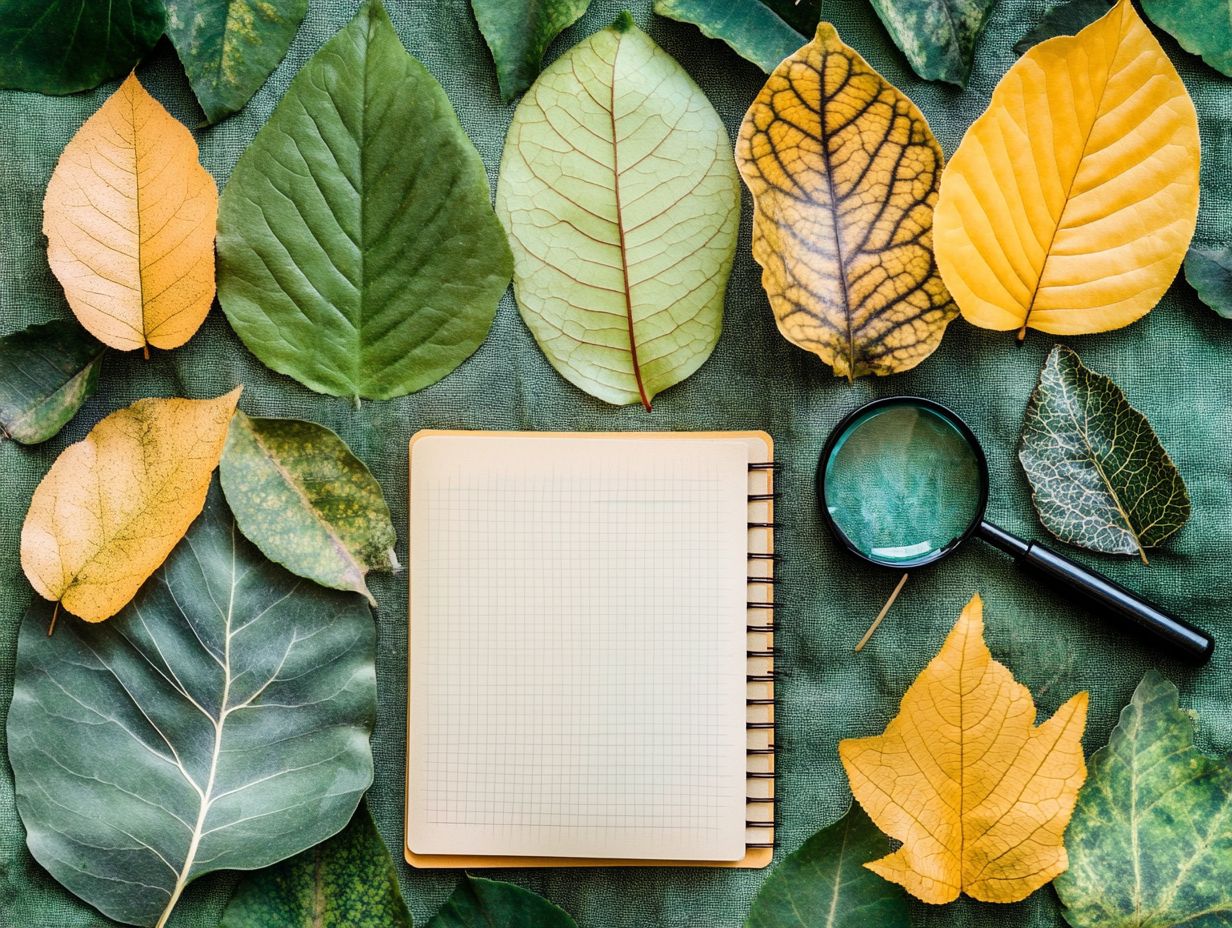
What are some key plant features to look for when identifying a plant?
Some key plant features to look for include leaf shape, flower color, stem texture, and overall plant size and shape.
How can studying plant features help with plant identification?
Studying plant features can help with identification by providing specific details that differentiate one plant from another. These features can also help narrow down the list of potential plant species.
What is the best way to observe and study plant features?
Use a magnifying glass or hand lens for a closer look at plant features. This makes it easier to spot details like leaf patterns and flower parts.
Are there any online resources or tools that can assist with studying plant features for identification?
Explore a wealth of online resources and tools to study plant features today! These can include apps, websites, and online databases with photos and descriptions of different plant species.
Why is it important to take note of the environment when studying plant features?
The environment can greatly affect a plant’s features, such as its size, color, and texture. Knowing the environment in which a plant is found can provide valuable information for identification.
Can studying plant features also help with identifying poisonous plants?
Yes, studying plant features can also help with identifying poisonous plants. Certain characteristics, such as specific leaf shapes or colors, can indicate toxicity in a plant.
Dive into these resources today and become a plant identification expert!


